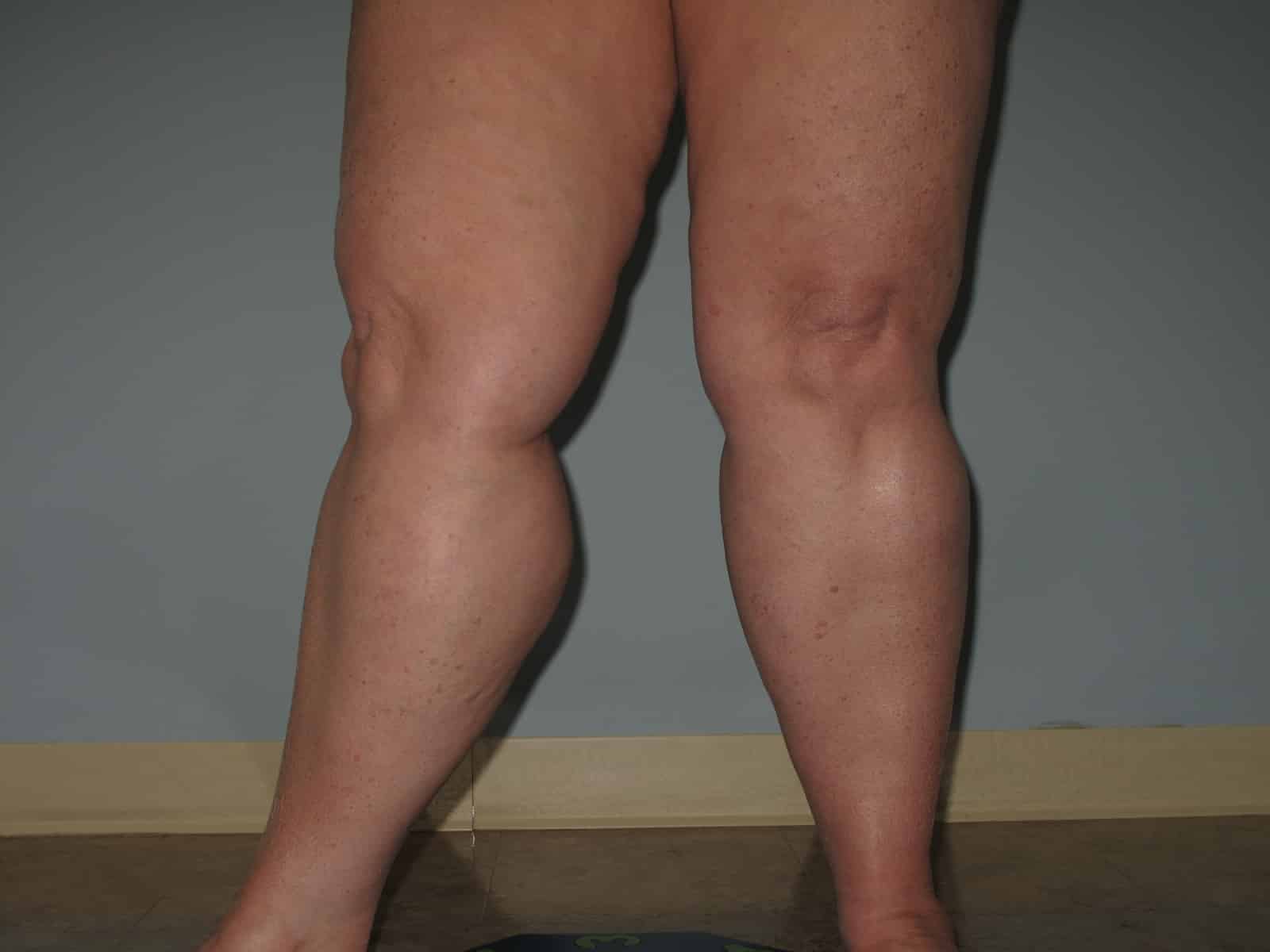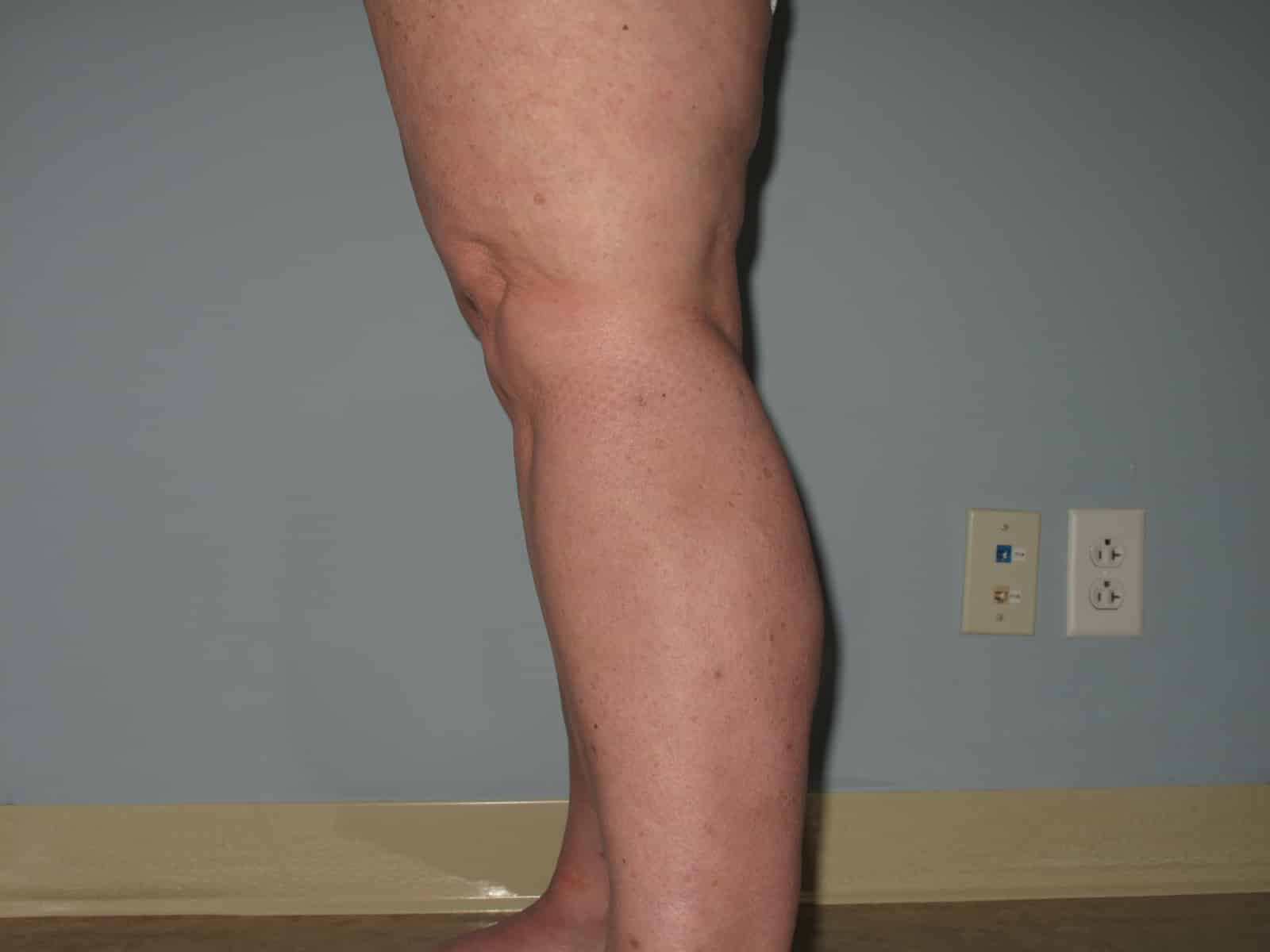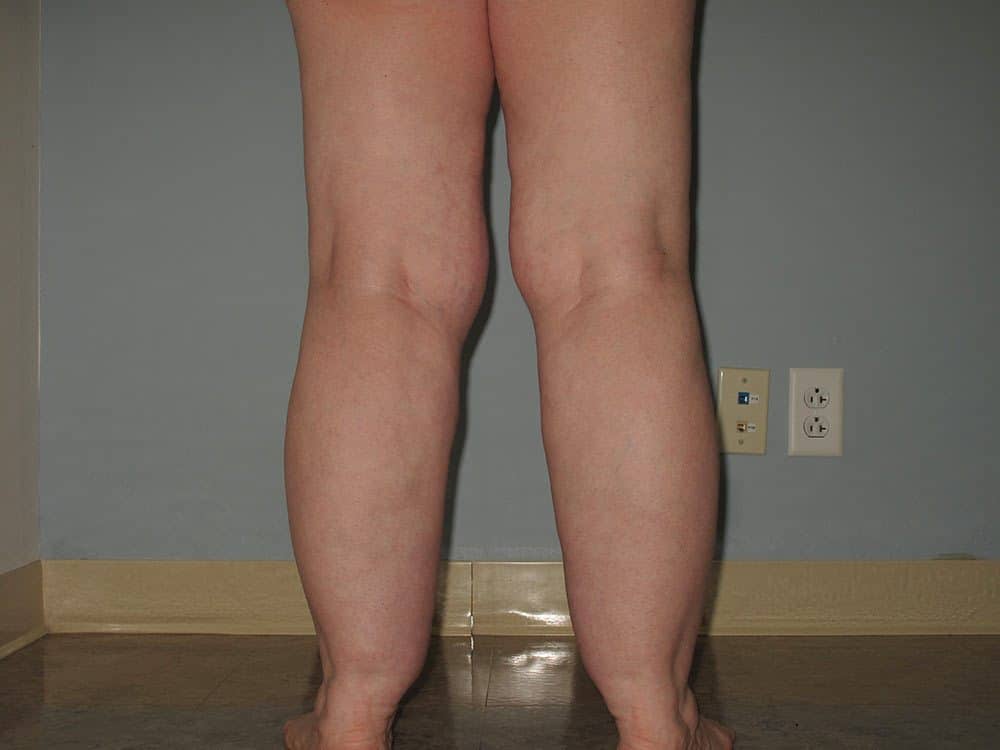There are four relatively common causes of large legs. This page discusses the most likely explanations of large or fat legs. This discussion is not comprehensive as there are other uncommon causes of leg enlargement. If you think you have one of these conditions, please consult with your physician to get a proper lipedema diagnosis.
Obesity
The most common cause of large legs is obesity or more specifically being overweight from an excess deposition of fat throughout your body. Obesity leads to more deposition of fat in the abdomen, especially internally in the visceral organs. These are the organs below the stomach muscle and include the liver, omentum, kidneys, and retroperitoneal space. Obesity also leads to increased fat deposition under the skin or subcutaneously.
Obesity is characterized by a much greater deposition of fat in the internal spaces versus the subcutaneous spaces. Obesity is very common in the US and the developed world. According to an article by the Harvard School of Public Health, roughly two out of three U.S. adults are overweight or obese (69 percent) and one out of three are obese (36 percent) [1]. Women can have obesity and lipedema together, but with pure obesity, the distribution of fat is primarily on the trunk and much less on the lipedema ankles, legs and arms. Most primary obesity is caused by an excess calorie intake greater than calorie expenditure.
There are some endocrine and metabolic causes for secondary obesity [2]. Endocrine disorders such as hypothyroidism, gonadal disorders, insulin disorders pituitary disorders, and Cushing’s Syndrome and genetic disorders such as Prader-Willi syndrome, all of which can cause secondary obesity [3].
Venous Insufficiency
The next most common cause of enlarged legs is venous insufficiency. Venous insufficiency or venous reflux disease is very common with estimates of 7 – 40% of the female population being affected. Venous reflux problems can affect one or both legs[ 4]. The left leg is slightly more affected, especially in women.
Lipedema is always symmetric in that it affects both legs equally. The chances of both legs having venous insufficiency are actually better than 50% because someone who develops venous reflux and varicose veins in one leg are more likely to develop it in both legs. Venous reflux disease leads to swelling and increased leg size. Like lipedema, the swelling and increased size of the legs early on spares the feet. If venous insufficiency and venous reflux disease affect both legs, it can be difficult to differentiate from lipedema unless venous reflux testing is performed.
The proper way to test for venous reflux is with a venous doppler ultrasound performed while the patient is standing. Venous doppler exams performed while laying down are the best at detecting DVT or blood clots but are not as sensitive for detecting Venous reflux. Patients can have venous reflux and lipedema and if present, they can make both conditions worse.

Lymphedema
Lymphedema can also cause arm and leg enlargement. Lymphedema is not as common as obesity and Vein disease, but it is not a rare disease. Lymphedema most commonly occurs in one limb but also can occur in the legs, arms or all four extremities. Lymphedema usually affects the distal part of the extremity such as the foot or hand first with swelling and enlargement and then proceeds proximally to affect the entire limb.
Lymphedema can and does occur with obesity or it can occur separately. Lymphedema commonly develops in more advanced stages of Lipedema. Lymphedema that develops secondary to Lipedema also generally spares the feet and hands until it is more advanced.
Lipedema Diagnosis
Lipedema is a common cause of bilateral leg enlargement. Estimates vary from 5% to 26% of the female population being affected, but most often the cited estimate is 11%. Depending on which estimate you believe, lipedema is a relatively common cause of leg – Lipedema calves and arm enlargement. The diagnosis of lipedema can not and should not be made without excluding the other causes of leg enlargement.

Lymphedema can usually be excluded by a careful physical exam. Venous disease can be excluded from lipedema by performing a Doppler ultrasound and a physical exam. Primary and secondary obesity can be excluded by a thorough history, physical exam, and ruling out some metabolic conditions. Once the other causes of leg enlargement have been properly ruled out, a knowledgeable physician can comfortably make the diagnosis of lipedema.
The diagnosis of lipedema is an important first to get the treatment and control of the disease. Early lipedema diagnosis and treatment is key to preventing complications of lipedema. While there is no cure for lipedema, the sincere hope of all the people in the lipedema community, the physicians, therapists, and of course the patients with lipedema is for the individuals with lipedema enjoy life to the fullest without any suffering from this potentially disabling disease. If you believe you have lipedema legs, consult with your physician!

References:
Classical endocrine diseases causing obesity. – PubMed NCBI https://www.ncbi.nlm.nih.gov/pubmed/18230905 by JU Weaver – 2008 – Cited by 75 – Related articles or Google Scholar Link
Prader-Willi syndrome https://ghr.nlm.nih.gov/condition/prader-willi-syndrome
Adult Obesity: A Global Look at Rising Obesity Rates. https://www.hsph.harvard.edu/obesity-prevention-source/obesity-trends/obesity-rates-worldwide/
PATEL, S. AND SUROWIEC, S. Venous Insufficiency In-text: (Patel and Surowiec, 2019) Your Bibliography: Patel, S. and Surowiec, S. (2019). Ncbi.nlm.nih.gov. https://www.ncbi.nlm.nih.gov/books/NBK430975/ or Google Scholar Link






















